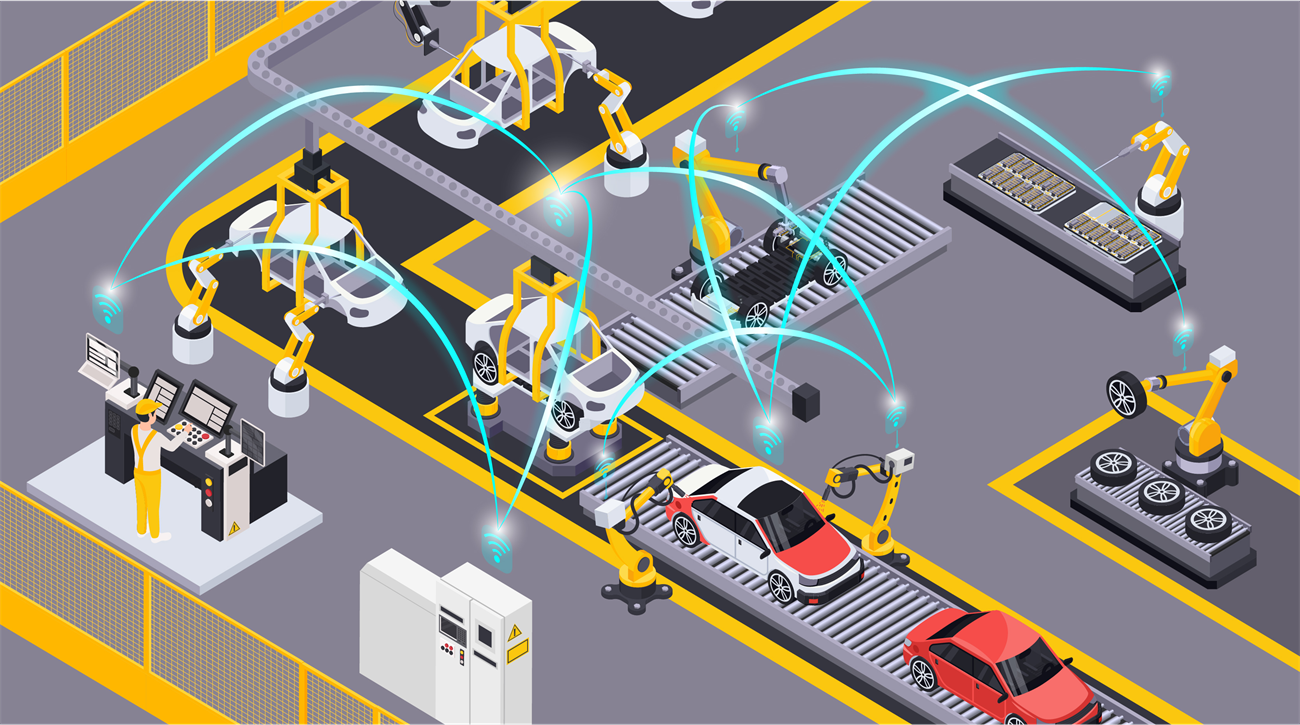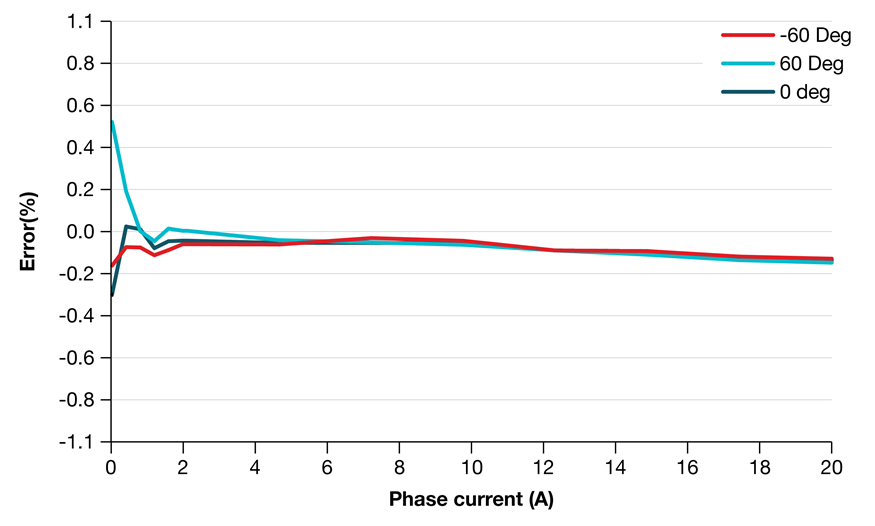SBOA401A June 2020 – March 2022 TMCS1100 , TMCS1100-Q1 , TMCS1101 , TMCS1101-Q1 , TMCS1107 , TMCS1107-Q1 , TMCS1108 , TMCS1108-Q1
4 Facilitating High-Voltage Diagnostics and System Monitoring
Massive growth in computing and smart factories necessitates better monitoring and diagnostics to better understand energy consumption, system performance levels, equipment health, and operational status. Expanding the number and performance of distributed current sensor nodes enables a highly-connected sensor network for automation, as Figure 4-1 illustrates.
 Figure 4-1 Smart Factories Require Highly Distributed Sensor Networks.
Figure 4-1 Smart Factories Require Highly Distributed Sensor Networks. Poor trade-offs among accuracy, cost, and form factor constrain designers in either the number or quality of isolated current sensors they can effectively use. Current sensors with low accuracy reduce the effectiveness of equipment automation, while higher-cost systems limit the possible number of nodes. The TMCS1100 family improves trade-offs, providing a simpler approach that makes isolated current measurement easier while reducing PCB space for space-constrained systems.
Much like how modern computers adaptively change processor operating conditions based on loading and data-throughput requirements, the same type of optimization is applicable to entire production or communication networks. Individual monitoring of equipment in a larger network allows for both load balancing or the throttling or shutting down of specific systems based on energy-consumption measurements.
The main challenge to such an optimization scheme is the ability to accurately measure power consumption or loading across a wide range of conditions. The low offset drift of the TMCS1100 and TMCS1101 enable high-precision energy measurements across a broad dynamic range, as Figure 4-2 shows, where < 0.5% active power metering accuracy was accomplished across load conditions from < 0.1 A to 20 A.
 Figure 4-2 Active Power Metering Capability With TMCS1100 Current Measurements.
Figure 4-2 Active Power Metering Capability With TMCS1100 Current Measurements. At the individual equipment level, current measurement information can optimize tool performance and collect diagnostic information to determine tool health and predict failures. Having a more accurate sensor with a lower lifetime measurement drift and higher temperature stability makes it possible to detect smaller levels of performance variation, as sensor uncertainty places a lower bound on detection capability. The same technique can also be used with redundant current measurements in systems where safety and reliability of high-power electronics are a key concern.